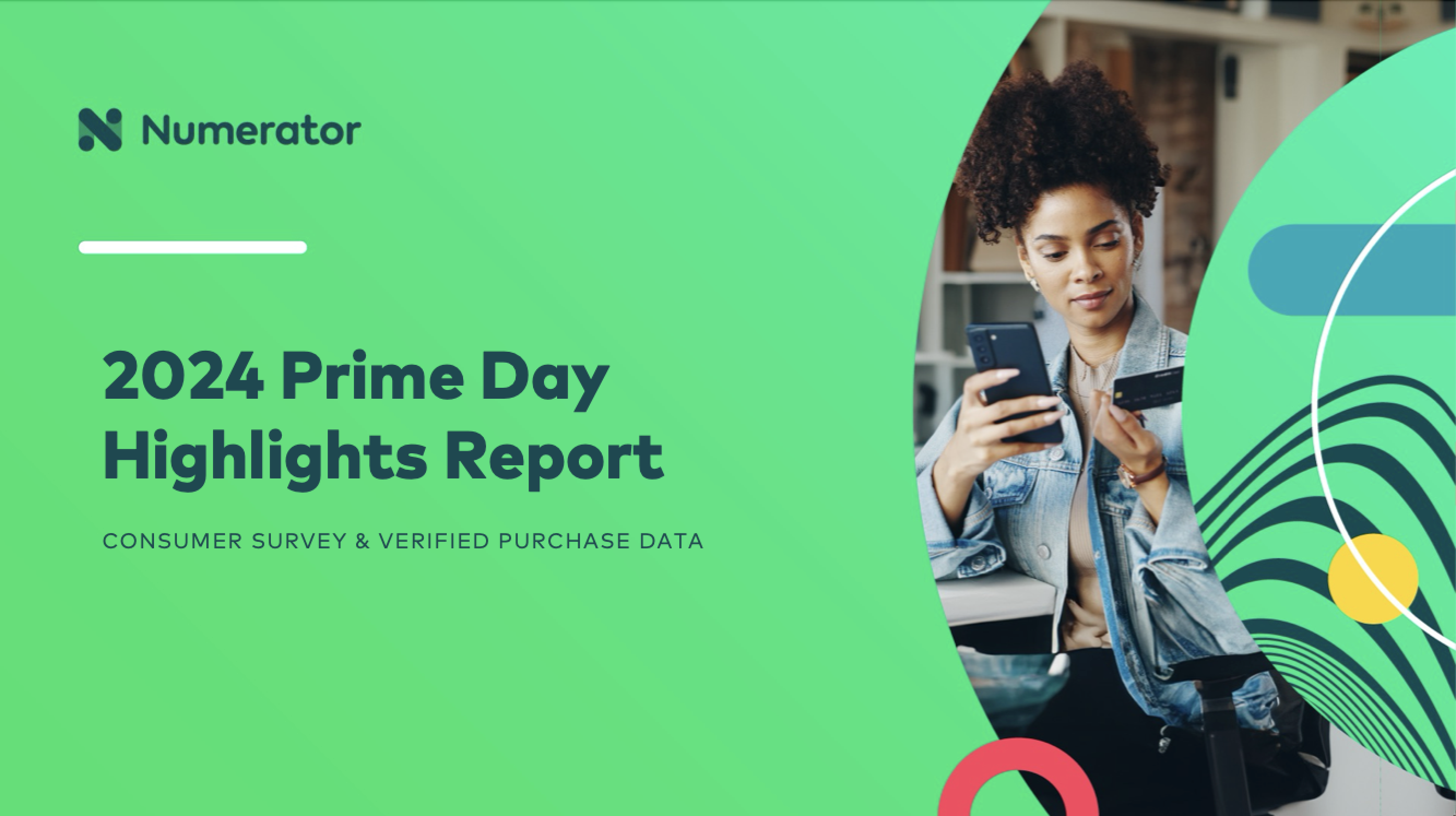PRIME DAY
LIVE TRACKER 2025 – ENDED
Numerator’s Amazon Prime Day Tracker compiled a live look across Numerator data sources to bring immediate insights into what happened on Prime Day. Our 2025 tracker ran from July 8 through July 11. All insights shared in our live tracker represent an early read and are subject to change.
2025 Prime Day Highlights
This data was published at 4PM ET on 7/11/25 and will not be updated again. The insights below are based on:
How much did shoppers spend on Prime Day 2025?
The average order size on Prime Day 2025 was $53.34. Nearly two-thirds (63%) of households shopping Prime Day placed 2+ separate orders, bringing the average household spend to roughly $156.37.
What did people buy during Prime Day 2025?
The top items on Prime Day 2025 were Premier Protein Shakes, Dawn Platinum Powerwash, and Liquid I.V. Packets. Two-thirds of Prime Day items (67%) sold for under $20, while 3% were over $100— the average spend per item was $24.59. The top categories buyers say they purchased were apparel & shoes, household essentials, and home goods. Over half of shoppers purchased something they’d been waiting to buy until it went on sale.
Who shopped on Prime Day 2025?
The typical observed Prime Day shopper was a high income, suburban female age 45 to 64. Nearly all individuals who placed an Amazon order during the sale knew it was Prime Day prior to shopping, and many said it was their primary reason for shopping. Close to 90% of Prime Day shoppers have shopped the sale in the past.
What did Prime Day shoppers think of the deals?
Two-thirds of Prime Day shoppers were highly satisfied with the deals offered. Over half of Prime Day shoppers compared prices with other retailers prior to placing their orders. Additionally, many Prime Day shoppers also shopped or planned to shop Walmart Deals (49%) and/or Target Circle Week (35%).
Check out past Prime Day coverage from Numerator.
2024 Prime Day Highlights Report
Our Prime Day Highlights report leverages observed purchase behaviors from our Total Commerce Panel and Verified Voices survey insights from over 8,000 verified Prime Day shoppers. Learn how different generations shopped, which categories grew the most, and what shoppers thought of the deals offered.
Reach Out For Custom Prime Event Insights
Thank you!
A member of our team will get back to you within 24 hours. In the meantime, explore our content to get a pulse on the latest consumer and shopper insights trends.




